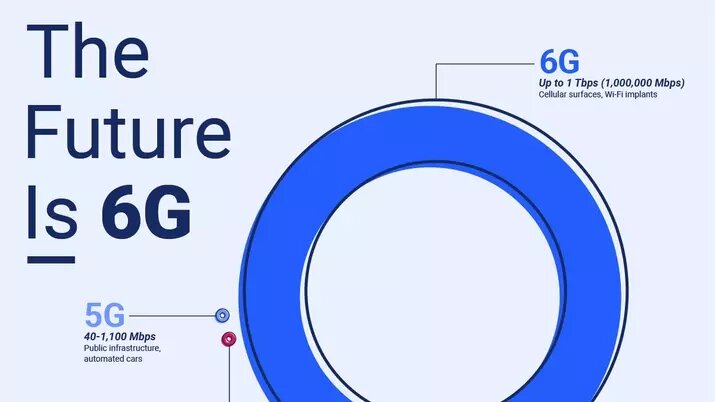Although many national operators have just welcomed 5G, as is the case with Digi, or do not even have the fifth generation of mobile networks among their services, the future is making its way and it is time to think about what progress will come along with it. to 6G.
One of the great improvements that 6G will have over 5G, as already happened respectively when going from 4G to 5G, will be an increase in browsing speed. However, the expectations that had been generated are already quadrupling, thinking about results of up to 1 Tbit/s.
1 Tb/s potential using 6G
Researchers from Osaka University and IMRA America have developed a single-channel optical wireless link that operates up to 240 Gbit/s. This optical wireless link uses a stimulated Brillouin scattering laser to generate signals at 300 GHz for 6G networks and targets multiplexed multichannel data rates of up to 1 Tbit/s.
The laser uses interactions between light and sound waves to produce a precise signal. In addition, the system also used online digital signal processing (DSP) to demodulate the signals at the receiver and increase the data rate.

According to the recent study published in IEICE Electronics Express, the key to these progress lies in the reduction of system noise, a notable achievement achieved by applying photonics in a subterahertz band spanning from 100 GHz to 300 GHz. The innovative approach helps improve system efficiency and performance and will undoubtedly revolutionize mobile communications.
“Our team achieved a single-channel transmission speed of 240 gigabits per second. This is the highest transmission speed achieved so far in the world using online DSP”. Said Tadao Nagatsuma, principal investigator of the project.
The researchers anticipate that with multiplexing techniques where more than one channel can be used and more sensitive receivers, the data rate can be increased to 1 terabit per second. This breakthrough promises to usher in a transformative era of near-instant global communication.
Noise sensitivity
The researchers used a very sophisticated approach called "multilevel signal modulation". However, this method becomes very sensitive to noise when operating at the upper end of these frequencies.

Therefore, to compensate, its optimal functionality depends on accurate reference signals, and when these signals experience fluctuations over time, known as "phase noise", the performance of multilevel signal modulation decreases.
“This problem has limited 300 GHz communications until now. However, we found that at high frequencies, a signal generator based on a photonic device had much less phase noise than a conventional electrical signal generator”, explains Keisuke Maekawa, another of the main authors of the study.
6G network technology promises not only faster upload and download speeds but also reduced latency. It plays a critical role in supporting emerging technologies such as artificial intelligence (AI) and the Internet of Things (IoT). Additionally, it addresses higher global coverage requirements, higher spectral efficiency and lower carbon footprint compared to its predecessor, 5G.





